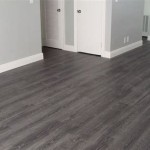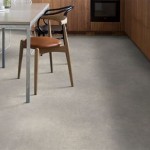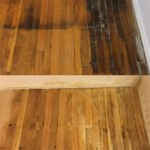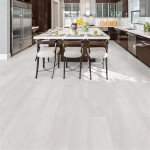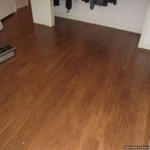DIY Cork Flooring for a Kitchen: Essential Considerations
Cork flooring offers a unique blend of durability, comfort, and sustainability, making it an appealing choice for kitchens. Installing cork flooring yourself can save you a considerable amount of money compared to hiring a professional. However, it's crucial to understand the essential aspects of DIY cork flooring installation to ensure a successful and satisfactory outcome.
Material Selection
There are two main types of cork flooring: solid cork and engineered cork. Solid cork is made from a single piece of cork, while engineered cork consists of a cork core with a veneer top layer. For kitchens, engineered cork is a more suitable option as it provides additional stability and moisture resistance.
Surface Preparation
Before installing cork flooring, the subfloor must be properly prepared. It should be level, dry, and free of any debris. Any unevenness or moisture issues can affect the performance and longevity of the flooring.
Underlayment
An underlayment is essential to provide cushioning and sound insulation. It also helps to smooth out any imperfections in the subfloor. Cork underlayment is a popular choice as it enhances the natural properties of cork flooring.
Installation Method
Cork flooring can be installed using two methods: floating and glue-down. Floating installation involves interlocking planks without the use of adhesives. It is a suitable option for flat and stable subfloors. Glue-down installation requires applying adhesive to the subfloor and then attaching the cork planks. This method is recommended for higher traffic areas.
Finishing
Once the cork flooring is installed, it needs to be sealed to protect it from moisture and wear. You can choose from various finishes, including wax, oil, or polyurethane. The choice of finish will depend on the desired aesthetics and level of traffic in the kitchen.
Maintenance and Care
Cork flooring is generally easy to maintain. Regular sweeping or vacuuming will remove dirt and dust. Spills should be cleaned up promptly using a damp cloth or mop. Avoid using harsh chemicals or abrasive cleaners as they can damage the finish.
Additional Tips
Allow the cork flooring to acclimate to the temperature and humidity of your kitchen for several days before installing. Use a sharp utility knife to cut the planks for a clean finish. Stagger the joints between planks to minimize the appearance of seams. Leave a small gap around the perimeter of the floor to allow for expansion and contraction.
Conclusion
Installing DIY cork flooring in your kitchen can be a rewarding project with the potential to save you money and enhance the aesthetics and functionality of your space. By understanding the essential aspects of cork flooring, including material selection, surface preparation, underlayment, installation method, finishing, and maintenance, you can ensure a successful and long-lasting installation.

32 Cool Cork Flooring Ideas For Maximum Comfort Digsdigs

Cork Kitchen Flooring Choosing The Right Floor For Your

Cork Kitchen Flooring Ideas Hunker

Cork Kitchen Flooring Ideas Hunker

How To Seal Cork Floors Young House Love

Cork Floor In Kitchen Yay Or Nay Mumsnet

32 Cool Cork Flooring Ideas For Maximum Comfort Digsdigs

How To Install A Cork Floor Young House Love

Cork Flooring For Your Kitchen

Our Cork Floors Update Report Flooring Kitchen
Related Posts

